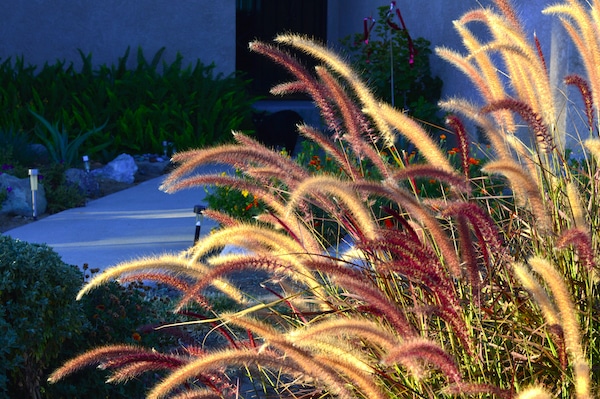With water becoming an increasingly scarce resource, it’s more important than ever to adopt water-wise landscaping practices in your yard. Not only can it help conserve water, but it can also save you time, money, and effort. In this article, we’ll explore some of the best water-wise landscaping ideas and tips to help you create a beautiful and eco-friendly landscape that suits your needs.
Xeriscaping
Xeriscaping is a landscaping technique that focuses on using water-efficient plants and designs that require minimal watering. Some popular xeriscaping plants include succulents, cacti, and wildflowers. You can also incorporate gravel, rocks, and mulch to reduce water usage and add visual interest.
Native Plants
Native plants are species that are indigenous to your region and are naturally adapted to the local climate and soil conditions. They require less water and maintenance than non-native plants and can provide important habitat for local wildlife. Some popular native plants include California poppies, Texas bluebonnets, and Oregon grape.
Drought-Tolerant Landscaping
Drought-tolerant landscaping involves choosing plants and designs that can thrive in dry conditions without needing much water. Some popular drought-tolerant plants include lavender, yucca, and agave. You can also incorporate hardscaping features like rocks, boulders, and pathways to add texture and visual interest.
Low-Water Gardening
Low-water gardening techniques focus on reducing water usage in your garden while still maintaining a beautiful landscape. You can achieve this by using efficient irrigation systems, mulching, and planting low-water plants. Some popular low-water plants include aloe vera, sedum, and verbena.
Sustainable Yard Design
Sustainable yard design involves creating a landscape that is both beautiful and environmentally friendly. You can achieve this by using recycled materials, planting native and drought-tolerant plants, and incorporating eco-friendly features like rain barrels and compost bins.
Gravel Gardens
Gravel gardens are a popular water-wise landscaping technique that involves using gravel as a ground cover instead of grass or other plants. They are low-maintenance and can add visual interest to your landscape. You can incorporate low-water plants like succulents, cacti, and ornamental grasses to add color and texture.
Rainwater Harvesting
Rainwater harvesting involves collecting rainwater from your roof or other surfaces and storing it for later use in your landscape. You can use this water to irrigate your plants, reducing your dependence on municipal water supplies. Rain barrels, cisterns, and other rainwater harvesting systems are widely available and easy to install.
Permeable Paving
Permeable paving is a landscaping technique that involves using porous materials like gravel, pavers, or flagstone to create a surface that allows rainwater to infiltrate the soil below. This helps to reduce runoff and improve soil health. You can also use permeable paving in your driveway or walkways to add visual interest and reduce water usage.
Artificial Turf Alternatives
Traditional turf lawns require a lot of water and maintenance to stay healthy. Artificial turf alternatives, like artificial grass, can be a low-maintenance and eco-friendly option. You can also use ground covers like clover, thyme, or creeping juniper as an alternative to traditional turf.
Efficient Irrigation Systems
Efficient irrigation systems, like drip irrigation or soaker hoses, can help reduce water usage in your landscape. These systems deliver water directly to the plants’ roots, minimizing evaporation and runoff. You can also use smart irrigation controllers that adjust watering schedules based on weather conditions and soil moisture levels, further reducing water waste.
Soil Health
Healthy soil is the foundation of a thriving landscape. By improving soil health, you can help your plants better absorb water and nutrients, reducing the need for excessive watering. You can improve soil health by adding compost, using natural fertilizers, and avoiding the use of harmful chemicals.
Landscaping for Climate Change
Landscaping for climate change involves creating a landscape that can adapt to changing weather patterns and support local biodiversity. You can achieve this by planting a diverse range of plants, creating habitat for wildlife, and using eco-friendly landscaping practices.
Eco-Friendly Yard Care
Eco-friendly yard care involves using environmentally friendly practices and products to maintain a healthy and beautiful landscape. You can achieve this by using organic fertilizers, avoiding harmful chemicals, and composting yard waste.
DIY Landscaping Projects
DIY landscaping projects can be a fun and cost-effective way to create a water-wise landscape. You can build features like raised garden beds, rain barrels, and compost bins to improve your landscape’s sustainability and reduce water usage.
Water Conservation Tips
There are many ways to conserve water in your landscape. Some simple tips include watering your plants in the early morning or late evening to minimize evaporation, using a broom instead of a hose to clean your driveway, and fixing leaky irrigation systems.
FAQ – Frequently Asked Questions
Water Wise
You can save up to 50% of your outdoor water usage by adopting water-wise landscaping practices.
Native plants are adapted to local climate and soil conditions, making them more resilient and requiring less water and maintenance.
You can create a water-wise landscape on a budget by using low-cost materials like gravel, mulch, and recycled materials, and choosing low-water plants.
Yes, there are many beautiful water-wise landscaping options that don’t involve a traditional grass lawn, like gravel gardens, native plant gardens, and artificial turf alternatives.
Frequently Asked Questions
Q: How much water can I save by adopting water-wise landscaping practices?
A: You can save up to 50% of your outdoor water usage by adopting water-wise landscaping practices.
Q: What are the benefits of using native plants in my landscape?
A: Native plants are adapted to local climate and soil conditions, making them more resilient and requiring less water and maintenance.
Q: How can I create a water-wise landscape on a budget?
A: You can create a water-wise landscape on a budget by using low-cost materials like gravel, mulch, and recycled materials, and choosing low-water plants.
Q: Can I still have a beautiful landscape without a traditional grass lawn?
A: Yes, there are many beautiful water-wise landscaping options that don’t involve a traditional grass lawn, like gravel gardens, native plant gardens, and artificial turf alternatives.
By adopting water-wise landscaping practices, you can create a beautiful and sustainable landscape that saves water, reduces maintenance requirements, and supports local biodiversity. Whether you choose xeriscaping, native plants, or permeable paving, there are many water-wise landscaping options available to suit your needs and budget. By making small changes in your landscape, you can make a big difference in conserving water and protecting the environment.




